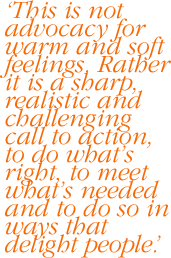

 |
 |
Chapter summary
And now it's time to go beyond branding…
In this closing chapter Malcolm challenges you to think very seriously about what his fellow authors have said and what you have concluded from their arguments. It's time for you to think about what you have read and its relevance to what you do, to your enterprise, your organisation and the communities in which you live and work. Now it’s your turn to go beyond branding, to go beyond your current thinking and its constraints, to find value in the application of the thinking that you have received in the preceding chapters.
He challenges you and your enterprise to become more agile, to learn to adapt your culture and processes to the short-term fluctuations in the world while sustaining a steady evolutionary purpose towards a clear and transparently declared set of objectives that take into account the needs of stakeholders and the world around them.
He argues that enterprises need to become more adaptable, sensitive, fit, and relevant to their customers and society more widely, and for them to operate systemic collaboration to give them the ability to constantly alter and develop the nature of their inter-relationships with their stakeholders and the environment that they operate in. He concludes that people and enterprises who operate in this way will create and build brands that people and society will value.
Just think about what it could feel like to go beyond branding as you know it. It would feel good to know that you and your brand really contributed towards peoples real needs, wants and aspirations, to a world that would be better for your contribution to it.
This is not advocacy for warm and soft feelings. Rather it is a sharp, realistic and challenging call to action, to do what’s right, to meet what’s needed and to do so in ways that delight people. If you do you will be a successful business, have a really relevant brand and know that your contribution to the world is meaningful.
Are you up for it or are you once again going to leave the action to someone else?
Read more in the full book
